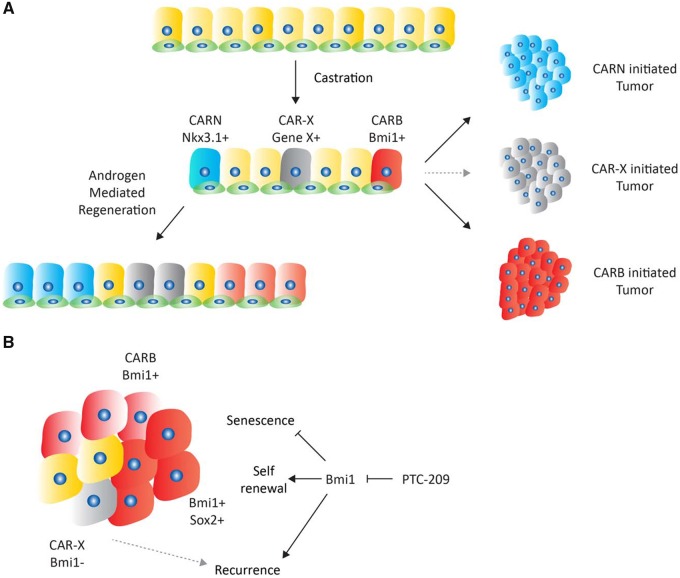Figure 1.
Model of prostate cancer stem cell heterogeneity. A) Schematic overview of prostate epithelium showing luminal cells (larger, upper) and basal cells (smaller, lower). After castration, two distinct stem cells have been identified: Nkx3.1-positive CARN cells and Bmi1-positive CARB cells that contribute to androgen mediated regeneration. Moreover, both can serve as a cell of origin for prostate cancer. CAR-X (gray) depicts the possibility of additional luminal progenitor cells distinct from CARNs and CARBs. B) Several distinct cell types are present in CARB-initiated tumors, including Bmi1-positive, Bmi1/Sox2-double positive, and Bmi1-negative cells. Inhibition of Bmi1 with the small molecule PTC-209 leads to an increase in senescent cells and a delay in recurrence. Recurrence is potentially driven by alternate cancer stem cells populations, such as CAR-X. CARN = castration resistant Nkx3.1 positive; CARB = castration resistant Bmi1 positive.

